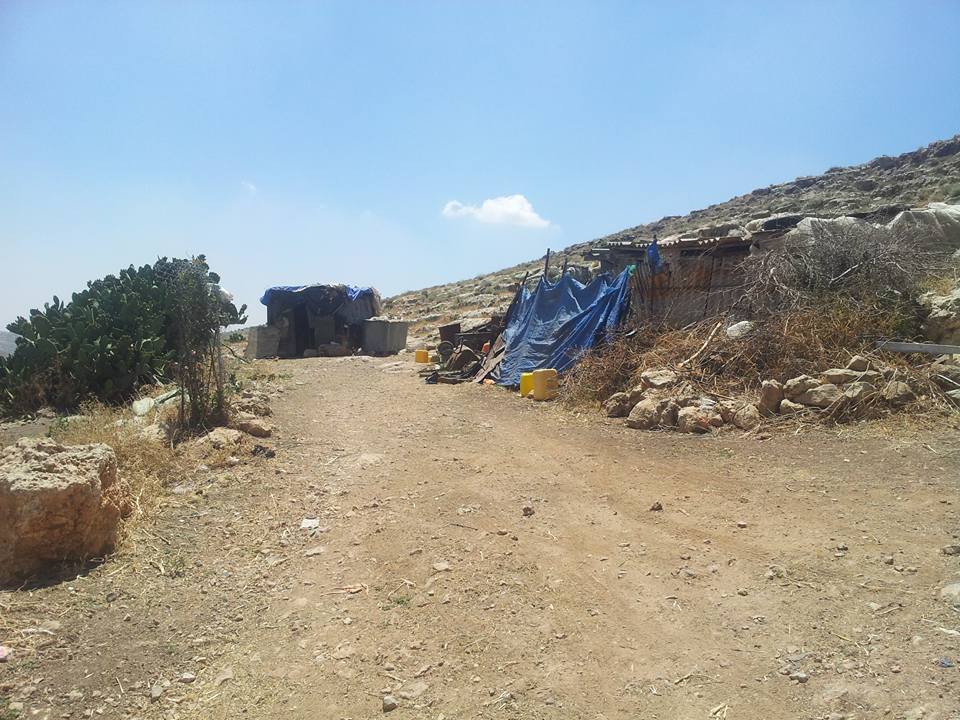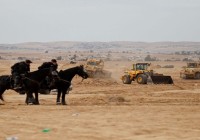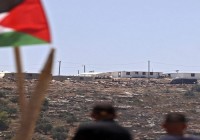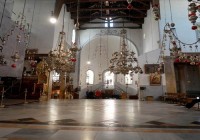Scenes of Suffering from Bethlehem
Several locations in the governorate of Bethlehem were the target of Media Tours Program. In this program, the Ministry of Media organizes periodic visits for a number of journalists and representatives of the media to the marginalized areas, in an effort to highlight the suffering of the citizens there. Palestine Economy Portal participated in the tour, and chose three of these scenes to shed light on.
Governor of Bethlehem, Jibreel Shukri
Bethlehem- Palestine Economy Portal | Emad Rajabi- Ayda Refugee camp was the first stop in the media tour. There, the governor of Bethlehem, Major General Jibreel Shukri, talked about the governorate’s suffering. In front of the Return Key statue, he told the portal that Bethlehem suffers from several problems due to the occupation policies, the most prominent one being the economic side. Despite being a touristic area, Bethlehem has the highest unemployment rate in the West Bank.
Tourism Problem
Shukri explained that the Ministry of Tourism, in cooperation with the municipalities and the governorate, is seeking to increase the number of tourists to over 300 thousand, as this would create new employment opportunities.
He denounced the Occupation measures in dominating foreign tourists, through the unethical domination the Israeli companies perform “where they determine for the tourists the places which they should visit, in addition to making them buy all they want from Israel before even reaching Bethlehem.”
The governor said he was counting on the International Tourism Conference (held on the 16 of June) in Bethlehem. He said “We will communicate the governorate’s tourism suffering through the participants and the media.”
Battir was listed in UNESCO’s list of World Heritage last year
Battir and steadfastness
The second stop was the village of Battir, which is included in UNESCO’s World Heritage list. In this village, which Canaanite name means “Bait Teir, house of the bird”, the visitor witnesses a natural piece of art. Green spaces, flower beds on windowsills, and water springs; all of this made even prettier with the singing of the birds.
It is no wonder that the village was included in the World Heritage list. The village is packed with historical places thousands of years old, some Canaanite, some Roman, and some Byzantine. The most prominent among these are a Canaanite castle, a Roman bath, and the well from which Prophet Abraham (PBUH) drank on his way to Hebron, as well as Al Umari mosque in which Caliph Umar bin Al Khattab prayed in his conquest of Jerusalem.
The railway that cuts through Battir was established by Ottomans
In the village there is also a railway which takes the memory back to the 1947 partition plan. The railway was built in the beginnings of the last century by the Ottomans as part of the “Hijaz Railways” project. However, after Ottomans were conquered and left Palestine, the British authorities completed the project to link Jerusalem with the Palestinian coast, or what is currently known as Tel Aviv.
After the village fell on the borders of the partition line between Palestine and Israel in 1947, the Israeli occupation managed to sign the Rhodes agreement in 1949 with the Jordanian government and the people of the village. The agreement gave Battir people the right to keep their land and properties within the Israeli part, in exchange of keeping the safety of the train that passes through their lands.
Thus, the village was divided into two parts, one under Israeli sovereignty, and another under Jordanian sovereignty, which was then transferred into Palestinian sovereignty. None of the Rhodes agreement terms was changed ever since.
Therefore, the people of the village kept direct contact with their lands despite the continuous harassments of the Israeli occupation. But it looks like people’s daily and peaceful contact and steadfastness in their lands behind the railways did not live up to the Occupation authorities, which has decided in the previous few years to build the expansion and annexation wall around the railway from the Palestinian side, on the pretext of securing the train and its passengers from possible attacks from Palestinians.
Beitar Illit settlement seized large tracts from Wadi Foukin village lands
Wadi Faoukin and the Caveman
The last stop was Wadi Foukin village to the west of Bethlehem, which went under Israeli occupation in 1967. However, Wadi Foukin’s people managed to return to it, and currently it’s under Palestinian control.
Here, settlement movement is embodied in its ugliest forms, as the village is surrounded with several settlements that seize citizens’ lands. The original area of the village in 1948 was 12 thousand dunams (one dunam is equal to 0.25 acres). Currently, the area allowed for construction declined into only 200 dunams, and the dangers of area declining are continuous; says Ahmad Sukkar, president of Wadi Foukin’s Village Council.
In addition to that, the occupation continuously tries to destroy what is left from agricultural areas, through pumping settlements’ sewage on the farmers’ lands, therefore destroying Wadi Foukin’s economy which relies on agriculture and livestock.
In Wadi Foukin, the tour visited Hajj Ahmad Manasrah, known also as the caveman. Hajj Manasrah (92 years old) has been living for decades in a tent in his land, next to a cave, as he fears that the Israeli Occupation would expand on the land, especially that the Occupation Authorities deliver demolition notifications to him periodically. Next to his tent there is a cave in which he keeps his livestock.

For years, Hajj Manasrah has been living in his land away from the village to protect it from confiscation.



